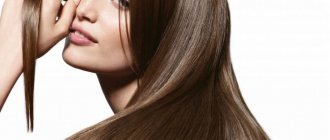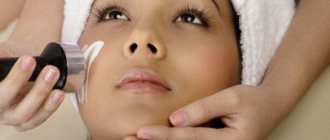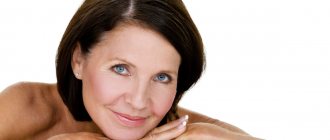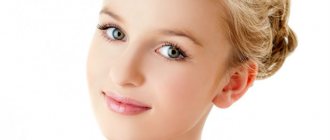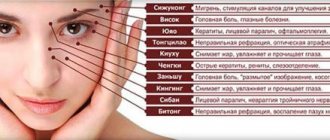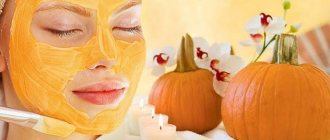05/25/2018 Category: Rejuvenation of the body Author: Giese Diana
Regular cleansing and exfoliation is an integral part of at-home facial care. Scrubs, creams with AHA and BHA acids, masks, rolling gels - there is a wide choice for every skin type and wallet. Peels stand out, which were previously used only in salons and were considered professional cosmetics, but are now increasingly found on mass market shelves. These products gently exfoliate the skin without damaging it or leaving microcracks. Peeling is also a procedure for exfoliating the skin.
- Types of peelings
By depth of impact - By method of influence
Mechanical
- Table: advantages and disadvantages of mechanical peeling
- Chemical
- Table: types of chemical peeling and their description
- Cryotherapy
- Ultrasonic peeling
- General stage: consultation with a specialist
Before physical peeling
- In the cabin
Table: stages of mechanical and chemical peeling
- Table: recipes for anti-aging and anti-aging peels for home use: salicylic, almond, milkweed and salt
- What is possible and necessary
General information about salon facial peeling
Facial peeling is a technique for cleansing and rejuvenation. Using special compounds and devices, a professional removes dead skin layers. At home, many girls independently carry out a superficial type of cleansing of the dermis. There are many drugs that allow you to conduct a session yourself, they include:
- essential oils;
- fruit and glycolic acids;
- abrasive particles.
At home, only superficial exfoliation is available. The salon session allows for medium or deep cleaning, depending on the patient's indications. Only the salon option quickly solves serious aesthetic problems and significantly rejuvenates the face.
Advantages and disadvantages of the procedure performed in the salon
There are a number of fundamental differences between the salon and home methods. The advantages of a salon include:
- high efficiency of the procedure;
- safety;
- the opportunity to solve serious aesthetic and physiological problems;
- spending a minimum amount of time; in some cases, one session is enough.
The main disadvantage was the high cost of transformation by professionals. To obtain and consolidate results, in most cases, it is necessary to undergo a course of procedures. The price of individual ones exceeds 20,000 rubles.
Only a professional can choose the best type of peeling based on the features and characteristics of a particular skin type.
Efficiency of the procedure
Treatment of rashes is a long process that requires complex therapy, but combining it with a course of peeling will speed up recovery
In fact, 1 procedure is often not enough for a visible result, of course, if we are not talking about deep peeling. Patients note improvements in appearance and velvety appearance, but this is not noticeable to outsiders. And even in photographs the effect after a single session is weakly expressed. Although it is also influenced by a large number of minor factors, supplemented by the individual characteristics of the skin. This is one of the main reasons when women are disappointed in the product, believing that it is not worth the suffering they endure.
Video: Jessner chemical peeling - video report and impressions
Treatment must be carried out in courses with individually calculated intervals - from 1 to 4 weeks. For minor problems or just for cleansing, 3 procedures are enough. If you need to even out the tone, you will need 4-7 visits to the specialist. The decisive factor is the intensity of pigment spots. Regular wrinkles are smoothed out by the 3-6th procedure, but facial wrinkles are a little more difficult. They are considered the most difficult to remove, so one-time peeling is definitely not enough. But post-acne and scars are the slowest to disappear - for pronounced ones, several full courses may be required with a break of 1-2 months.
Possible complications
Still, the Jessner peel is a chemical burn, the only difference being that it is carried out under the supervision of a specialist. Therefore, unpleasant sensations cannot be avoided either during the procedure or during the process of renewal of the epidermis. Another thing is that some of them are considered to be relatively normal, and some are considered serious problems that require treatment. Possible consequences:
- Swelling - can be weak or quite noticeable, appears mainly after 1-2 days. In general, short-term swelling is normal, but in severe cases the face may swell for a week. To prevent this from happening, you need to take into account the structure of the skin, select the correct concentration of acids and the number of layers.
- Partial pigmentation is an individual reaction, but more often spots are the result of neglectful care (lack of SPF, peeling off the skin). Sometimes they go away on their own after some time. Peeling in the autumn-winter period minimizes the risk of hyperpigmentation.
- Painful skin sensitivity. When it appears in the first days after peeling, this is normal. But if the peeling comes to an end, and the discomfort still does not go away, then this is already an alarm bell. It is quite possible that the solution was too strong or the post-peeling period was not carried out correctly.
- Pimples, ulcers, herpes, etc. - becoming covered in red dots after Jessner is not normal. But they may indicate not only a violation of sanitary peeling (care) standards, but also the presence of hidden or chronic diseases. You may need to be treated with antibiotics.
- Allergies occur extremely rarely, because before the main application the product is tested on a small area of skin. But if there are signs of an allergic reaction (not to be confused with burn symptoms), you will need to see a doctor. Suprastin, Cetrin, Diphenhydramine, etc. will help alleviate the condition.
When performing a Jessner chemical peel at home, you need to be extremely careful - even a small application mistake can lead to serious consequences.
Types of salon peelings according to the method of effect on the skin
Peeling is classified according to the method of exposure:
- Chemical. Biologically active components work.
- Mechanical.
- Enzymatic or biological. It is based on the action of enzymes, minerals or lactobacilli.
- Physical. The work takes place on devices using physical factors: ultrasound, laser, cold.
Let's look at the distinctive features and characteristics of each.
Mechanical
The technique is based on mechanical treatment of the selected area; during the session, one to several layers of the epidermis are removed. There are a number of types of exfoliation, depending on the strength of the effect on the skin:
- Light or brossage - affected depth up to 50 µm, only stratum corneum. The cosmetologist combines massage and cleansing. For the session, natural bristle brushes, scrubs and special emulsions are used. The best results are achieved by a course of 5-10 procedures. This gentle procedure is recommended for young people with problem skin. The result is cleansing of pores, evening out color and texture, improved blood circulation, and increased elasticity.
- Gommage - the effect is achieved due to the action of fruit acids; no hard abrasive particles are used. The procedure is suitable even for those with dry and sensitive skin. The gentle action of a professional mask, cream or gel will cleanse pores, improve the color and texture of the face, rejuvenate and heal the skin.
- Microdermabrasion - removal of dead cells, depth of effect up to 120 microns. The procedure requires special equipment, thanks to which micro-grinding occurs with small abrasive particles - aluminum dioxide crystals or diamond dust. Recommended for eliminating the effects of acne, scars, and first wrinkles. The technique is suitable for women suffering from allergic reactions to acids and is an alternative to chemical peeling.
Chemical
Chemical peeling for facial skin is a controlled burn of the dermis. The depth of effect is related to the concentration of the active substance. As a result, dead cells are removed, cleansed and rejuvenated. Divided into types according to the strength of impact:
- Surface. The mildest, using hydroxy acids and alpha hydroxyl acids. Recommended for people under 30 years old, solves acne and post-acne problems.
- Median. It is a sensitive procedure affecting living cells. A number of acids are used: trichloroacetic and salicylic. Helps eliminate age spots and the first signs of aging, whitens the skin.
- Deep. Aggressive technique using phenol. Recommended for patients over 55 years of age.
Peeling with fruit acids
Refers to the superficial type of chemical peeling. There are 6 types of acids as active substances:
- dairy;
- grape;
- glycolic;
- apple;
- lemon;
- wine
Suitable for solving problems of young skin and eliminating the first wrinkles.
Enzymatic or enzymatic
Based on the depth of impact, it is considered a superficial type of exfoliation. It is based on the work of enzymes of plant, animal or bacterial origin. Recommended for young skin, to solve problems of excessive sebaceous glands, healing and rejuvenation.
Enzyme peeling is suitable for people with sensitive skin and can be performed at any time of the year.
Mesopeeling
The technique appeared in 2000 and combined chemical exfoliation with an injection method of rejuvenation. During the procedure, a 1% acid solution is injected under the skin to a depth of 1 to 2 mm. Mesopeeling is more focused on eliminating existing defects than on cleaning.
The procedure can be performed on people of different age categories to solve aesthetic and physiological problems and preventive measures.
Ultrasonic
One of the easiest and most painless types of exfoliation. The work is based on the action of a sound wave. It has an effect at a frequency that is not perceptible to human hearing. The method has found wide application in cosmetology and medicine. If indicated, it can be performed on young and mature skin.
Laser
One of the safest methods to combat skin imperfections. To solve problems, a laser beam is used to evaporate the surface layers of cells from the selected area. Two types of laser are used for work: carbon and erbium. The first is distinguished by the possibility of scarring, the second acts more gently. The technique is aimed at different age categories, starting from a very young age.
Table: comparison - pros and cons (features) of Jessner as opposed to others
| Parameter | Jessner composition | Alpha Hydroxy Acids (AHAs) | Trichloroacetic acid (TCA) | Retinoic peeling |
| Security |
|
|
|
|
| Result |
|
|
|
|
| Impact |
|
|
|
|
| Preparation |
|
|
|
|
| Acceptable skin type | Any | Any | In addition to dry and sensitive | Any |
| Recovery | 5–10 days | 2–5 days | 10–14 days | 2–4 days |
| Duration of the procedure | 15–60 minutes | 20–60 minutes | 20 minutes | 20 minutes |
We can say that, for the most part, chemical peels have approximately the same properties, advantages and disadvantages, not counting soft fruit peels. The procedure with Jessner's solution is a little more painful, and its recovery is not as fast as the advertisement claims. But among peelings, it is better than others in renewing and smoothing the surface of the face. But when it comes to lightening, it loses to the yellow (retinoic) composition.
Stages of facial peeling in a beauty salon
Each salon has its own distinctive stages of exfoliation. The procedure diagram everywhere consists of the following steps:
- Steaming.
- Application of the drug.
- Providing anesthesia if necessary.
- Use of special equipment in case of hardware type of peeling.
- Removal of applied drug residues.
- Treatment with an anesthetic or sedative.
- In case of deep impact , apply a bandage or a restorative mask.
- Compliance with the rules of the rehabilitation period.
An example of a session is presented in video materials from many beauty salons.
When is the best time to do a facial peel?
Traditionally, the best period is the autumn and winter seasons. At this time of year, ultraviolet activity is minimal.
Reviews from real people about facial peeling from cosmetologists
Anna, 25 years old:
From a young age I suffer from acne and acne. I tried different treatment options: acid and almond peels did not help. For dry, sensitive skin, the cosmetologist advised a course of procedure - gommage. Finally managed to solve all the problems. I recommend!
Olga, 31 years old:
For girls with facial skin problems after the age of 25, I advise you to try the hyaluranium method. The effect is noticeable immediately, the procedure does not cause discomfort. In the salon, to consolidate the result, 5 sessions were carried out. It was possible to whiten my face, remove freckles and the effects of acne. Thanks to the specialists!
Antonina, 57 years old:
Good day. After 50 years, age-related changes began to be noticeable on the skin, and even professional creams could not cope with the problems. Thanks to deep chemical peeling and the work of specialists, it was possible to significantly rejuvenate the face.
Natalya Podolskaya, 30 years old
I recommend that all girls with skin aging problems sign up for a needle peeling session. The cosmetologist’s work lasts no more than 30 minutes; after a couple of days, the face looks several years younger. I’m happy with the result, I didn’t find any cons for myself!
WHAT IS BODY PEELING
To get an idea of what body peeling is, you need to know how our skin, the largest human organ, works. The bottom line is that the top layer of integument - the epidermis - periodically dies, and the outdated horn cells exfoliate once a month.
Due to age and poor environmental conditions, natural exfoliation slows down, making it difficult for nutrients to penetrate into tissues. This is why it is necessary to regularly slough off dead cells using exfoliation. After a course of use, the skin smoothes out, becomes more elastic, gets rid of the hated “orange peel”, acquires a pleasant color and velvety feel.
In addition to visual effects, the procedure also has a therapeutic effect: it accelerates cellular metabolism, triggers the regeneration mechanisms of collagen and elastin fibers, restores cellular respiration, relieves swelling, normalizes water-lipid metabolism and allows nutrients to pass into tissues.
Who is the procedure suitable for?
Body peeling is prescribed after 18 years of age for the following indications:
- Loss of skin tone in the thighs, buttocks, chest, etc.
- “Orange peel” (along with local beauty injections, wraps and massage).
- Acne and its residual effects.
- Stretch marks (striae).
- Age-related changes.
- Overweight.
Who should not exfoliate?
To avoid possible complications, you need to know in which cases it is better to refrain from exfoliation. The main contraindications are:
- Open wounds at the site of treatment (for example, from shaving).
- Mycoses, herpetic rashes.
- Menstruation period (for areas of the lower half of the body).
- Pregnancy or lactation.
- Low-grade (high) temperature.
- Diseases of the heart, blood vessels or oncology (except for superficial peeling).
- Individual intolerance to exfoliant components.
Before starting the sessions, it is advisable to obtain a doctor’s recommendations and conduct an allergy test.
We recommend: Gas-liquid peeling: rejuvenation with the elements of air and water
Answers on questions
How often should you have your face peeled in a salon?
The regularity of the procedure depends on the individual characteristics of the patient and the type of peeling.
What options are there for light, gentle peeling?
Types of light exposure include: brossage, laser exposure, chemical types of exfoliation with low acid concentrations.
How much does ultrasonic peeling cost?
The price of one session is from 2000 rubles.
Superficial chemical peeling
This type of peeling is designed to eliminate shallow pigmentation, combat photoaging of the skin and smooth out small facial wrinkles. Using a superficial treatment can also get rid of pimples and acne scars.
The depth of impact does not exceed 0.06 mm, so the procedure is practically painless; during it, the client feels only a slight burning and tingling sensation. Recovery occurs very quickly: after a few hours the redness disappears, and after a few days the epidermis (skin) is completely regenerated.
The following acids are used for superficial chemical peeling of the face:
- almond;
- glycolic;
- dairy;
- apple;
- lemon
- and others.
Of particular note is glycolic peeling: it is considered superficial, but the size of the acid molecule is so small that the acid is able to penetrate through the protective barrier of the skin into deeper layers. Thanks to this property, glycolic acid stimulates collagen production, rejuvenating and tightening the skin.
Contraindications to chemical skin smoothing procedures
For any type of chemical peeling, the following body conditions are contraindications:
- skin diseases;
- hypersensitivity of the skin;
- tendency to form keloid scars;
- herpes;
- rosacea (dilation of blood vessels on the face);
- violation of the integrity of the skin (burns, open wounds);
- During pregnancy and breastfeeding;
- exacerbation of acne;
- cardiovascular diseases;
- mental illness;
- any painful conditions of the body (flu, ARVI, fever of any etiology).
People suffering from any type of cancer or any type of allergy should avoid peeling.
It is not recommended to perform a chemical peeling procedure in the summer, as hyperpigmentation is possible. After all, the summer sun pigments the skin. The best time, according to cosmetologists, for chemical peeling is autumn.
Contraindications
To prevent deep chemical peeling from causing harm, the following limitations must be taken into account:
- diseases of the kidneys, liver, heart and blood vessels - phenol is toxic and can cause deterioration in the functioning of these organs;
- herpes;
- vitiligo;
- dark skin - exposure to it often leads to increased production of protective pigment;
- the presence of keloid scars or a predisposition to them;
- atopic dermatitis;
- chronic urticaria;
- pregnancy or breastfeeding.
What are the disadvantages?
The disadvantages of the chemical method include its extreme aggressiveness. In fact, it causes a deep burn to the skin and requires strict adherence to the recommendations of the attending physician before and after the procedure (it can be performed no more than once every few years). Facial peeling using phenol has the following negative consequences:
1. Deep pain syndrome. It is a consequence of a burn and, as reviews indicate, it is felt for several days. Analgesics are prescribed to relieve pain.
2. After treatment, the face turns into a wound, open to the penetration of any bacteria. To prevent infection, you have to take antibacterial drugs for a long time. At the same time, the use of alcohol and other caustic substances as antiseptics is absolutely excluded. In the first two days, contact even with water is dangerous.
3. After a chemical peel, the face becomes sensitive to ultraviolet radiation for the rest of its life. During the first eight weeks, exposure to the open sun is not allowed, and after this period in the summer season, constant use of protective cosmetics is required.
4. Long duration of the rehabilitation period. Skin renewal requires at least two months, and all structures are completely restored in at least six months.
The cosmetic effect after chemical peeling is influenced by the concentration of the main substance, the method of applying the solution and the number of procedures. But, as reviews confirm, a composition with a certain acidity in one case can burn the face, and in another it will be too weak.
Carbon peeling: indications and contraindications
Like any cosmetic procedure, carbon peeling has a number of indications and contraindications.
Indications:
· acne disease; · rosacea; · early manifestations of skin aging; · excessive oily skin and large pores; · pigmentation on the skin.
Contraindications:
· pregnancy, lactation period; · inflammatory manifestations on the skin, acute and chronic; · history of keloid scars; · herpes in the acute stage; · infectious and purulent skin diseases; · oncology.
Preparation for cleaning and care after the procedure
Before ultrasonic treatment, there is no need to specially prepare the skin - steam it or do chemical peeling. Guys just need to shave closely.
After the procedure, the skin requires special care. During the first day it has a slight pinkish tint. You should avoid visiting bathhouses, saunas, and solariums. In sunny weather, you need to apply a cream with protection of at least 30 SPF.
Care instructions:
- use gentle cleansers;
- apply nourishing cream;
- wipe your face with ice cubes from a decoction of chamomile or calendula;
- Do not apply decorative makeup for 12 hours after the procedure.
There are no complications after cosmetic manipulation if it is performed by a specialist. If you handle the device improperly, a slight burn to the skin may occur.
To watch a video from the salon, how the procedure goes:
Why do you need retinoic peeling?
Bodyaga peeling for face
This type of chemical peeling helps to cope with a lot of problems. Among them:
- Wrinkles.
- Skin hyperpigmentation.
- Keratoses.
- Dull skin.
- Pimples (acne), as well as scars left after unsuccessful treatment.
- Excessive activity of the sebaceous glands.
- Loss of skin firmness and elasticity.
That is, the procedure can be used by anyone if they have no contraindications. Yellow peeling is contraindicated for pregnant women, as well as women during breastfeeding, people with severe somatic diseases, liver diseases, herpes and demodicosis
And, of course, it is very important before starting rejuvenation to find out whether there is an allergy to all components
Kinds
Yellow peeling comes in two types: two-day and night (one-day).
Yellow Peel - Yellow night peeling. It begins with the first drug being applied to the patient in a cosmetology office. The second must be applied at home yourself and left overnight. At the same time, sometimes the cosmetologist prescribes 1 independent application, and sometimes more (up to 10 procedures).
The best articles according to our readers:
Two-day peeling is less popular, since the recovery period after it is slightly longer, and the swelling is more visible. The entire procedure takes place in the office of a specialist, who applies the product several times in a row for 2-4 hours. The cosmetologist does not wash off the last layer, but sends the patient home directly with it. At home, the layer is washed off after 2 hours. On the second day of the procedure, everything is repeated, but the number of applications depends on the skin reaction after the first day. After 2 weeks, the cosmetologist assesses the patient’s condition and sometimes recommends repeating the procedure.
Positive and negative sides
Like any other cosmetic procedure, yellow facial peeling has its pros and cons. The advantages include:
- Fast skin recovery. Most other types of chemical peels require at least a week of recovery time.
- Soft effect. This rejuvenation can be carried out on the most sensitive and delicate skin, as it acts very delicately.
- Can be done at any time of the year. Hiding from the summer sun for two days is not so difficult, so summer is not a contraindication for the procedure. If you decide to rejuvenate before your vacation, yellow peeling will be the only right solution.
- High efficiency, despite the superficiality of the procedure. No other type of surface peeling will give such a strong effect.
Yellow peeling has very few disadvantages and you can put up with them if you wish. First of all, the disadvantage is the duration of the procedure if you choose the two-day option. Get ready for the fact that you will have to spend 4 hours in the cosmetologist's office. The second disadvantage is that you may have to get home directly with a mask on your face. You can’t get behind the wheel like this, much less ride on public transport.
Skin condition after peeling
Peeling has a beneficial effect on facial skin. It smoothes its surface, increases elasticity and turgor. After cleansing, the skin looks tightened and the skin takes on a healthy appearance.
After a cosmetic procedure, wrinkles, scars, and age spots decrease or completely disappear. The skin is cleared of acne. The effect of rejuvenation occurs due to cell renewal.
In addition, the degree of protection of the integument and its regenerative ability increases. The sebaceous glands begin to work in the correct mode, and the pH level of the skin is normalized.
Benefits for the skin
You can get the maximum benefit from the procedure not only in cosmetology clinics and beauty salons, but also at home. The mechanism of action does not depend on the type of peeling, location or high cost of the product used. Its result leads to cleansing of the deep layers of the skin from dead epidermal cells.
Positive influence:
- Cleansing. The active components of the cosmetic product contribute to a significant weakening of the connection between cells. This helps remove dead skin, subcutaneous fat and ducts. As a result, the face becomes smooth with an even tone.
- Rejuvenation. Having gotten rid of dead cells, the skin begins to actively regenerate. This process leads to the formation of new cells. In addition, cellular fibrils of collagen and elastin are produced. The elasticity and firmness of the skin increases, folds and wrinkles are smoothed out.
- Normalization of subcutaneous sebum production. This is especially important for those with oily skin types. Clogged pores become cleaner and narrower due to natural secretion. Carrying out the procedure in a course effectively fights acne and acne.
- Getting rid of shortcomings. Exfoliating dead skin removes acne marks, acne scars, and scars. The active components of the products used stimulate the acceleration of melanin synthesis. Thanks to this, pigment spots become less noticeable.
Glycolic peeling procedure purpose
Let’s try, first, to clarify when and why glycolic peeling is done. What results should be expected and after how many procedures.
Indications for this procedure are:
Flabby and aging skin,
Increased pigmentation
Scars and spots after acne,
Problem skin,
The presence of wrinkles and folds on the skin,
Skin restoration after excessive sun exposure (photoaging),
Treatment of molluscum contagiosum.
Even before the procedure, the cosmetologist must assess the condition of the skin and understand what the patient expects from the procedure. You need to understand that it does not work miracles, but only improves the appearance of the skin. On the day when the procedure is planned, you cannot use cosmetics and afterward visit a solarium or be in the sun. Therefore, the best time for peeling is early spring or late autumn, when the sun is less active. .
Glycolic peeling - procedure
Glycolic peeling consists of several stages:
A cleanser is applied to the skin to hydrate without disturbing the body's acidity. It optimally prepares it for exposure to acid;
Direct application of glycolic acid;
Applying a product that neutralizes the acid;
A special serum, soothing cream or mask is applied to the face.
After applying peeling with a brush, gauze or cotton wool, the skin becomes slightly reddish. After this, slight tingling sensations are felt in the skin and this is normal. But during exposure to acid, the cosmetologist must be extremely attentive to the skin’s reaction, because the skin may become very red or swell.
After neutralization of the peeling, the skin remains reddish for several hours. In order for the complexion to normalize, it is recommended to apply cold compresses to it. After the procedure, crusts may form on the skin, but they cannot be removed with force, otherwise wounds will remain. You just need to use special cosmetics that moisturize the skin and help it recover.
If you need to achieve a dramatic result, then a course of glycolic peeling is prescribed. It is recommended to do up to 8 procedures with an interval of 2 weeks between each procedure. After this course, the skin becomes tightened, wrinkles are smoothed out, pigmentation is lightened and the overall complexion is evened out.



